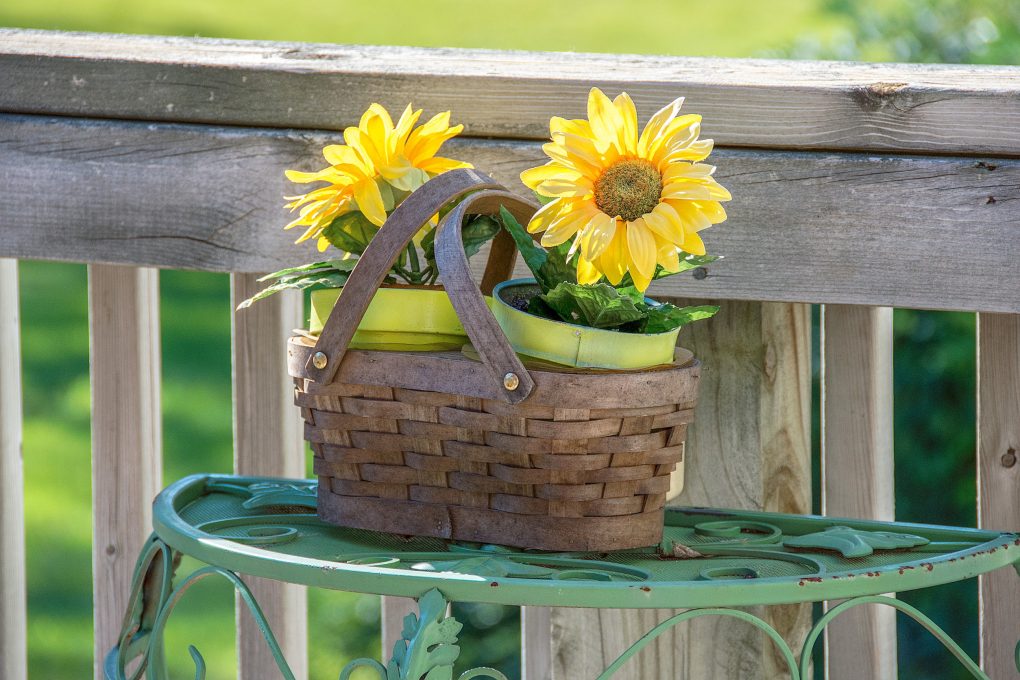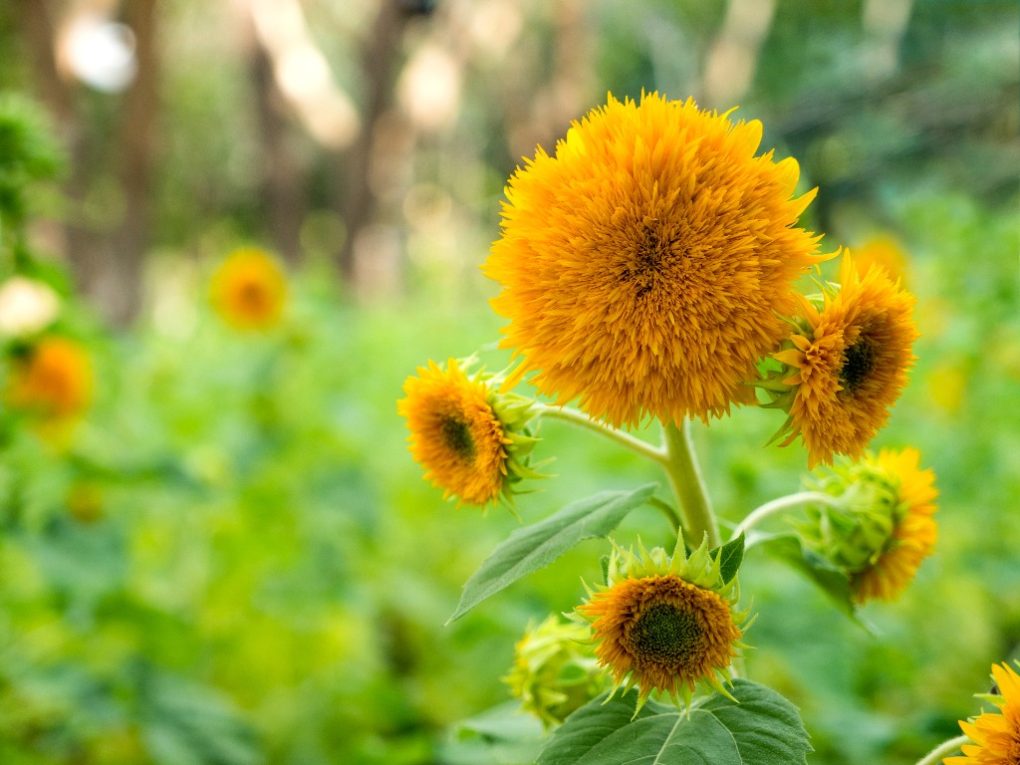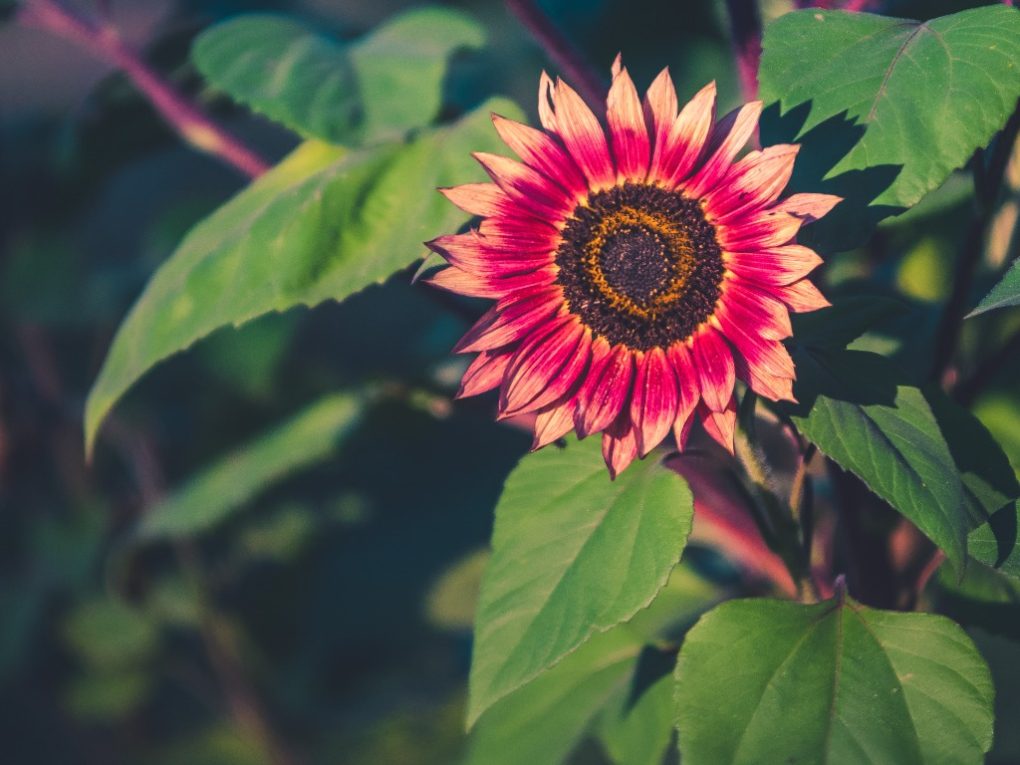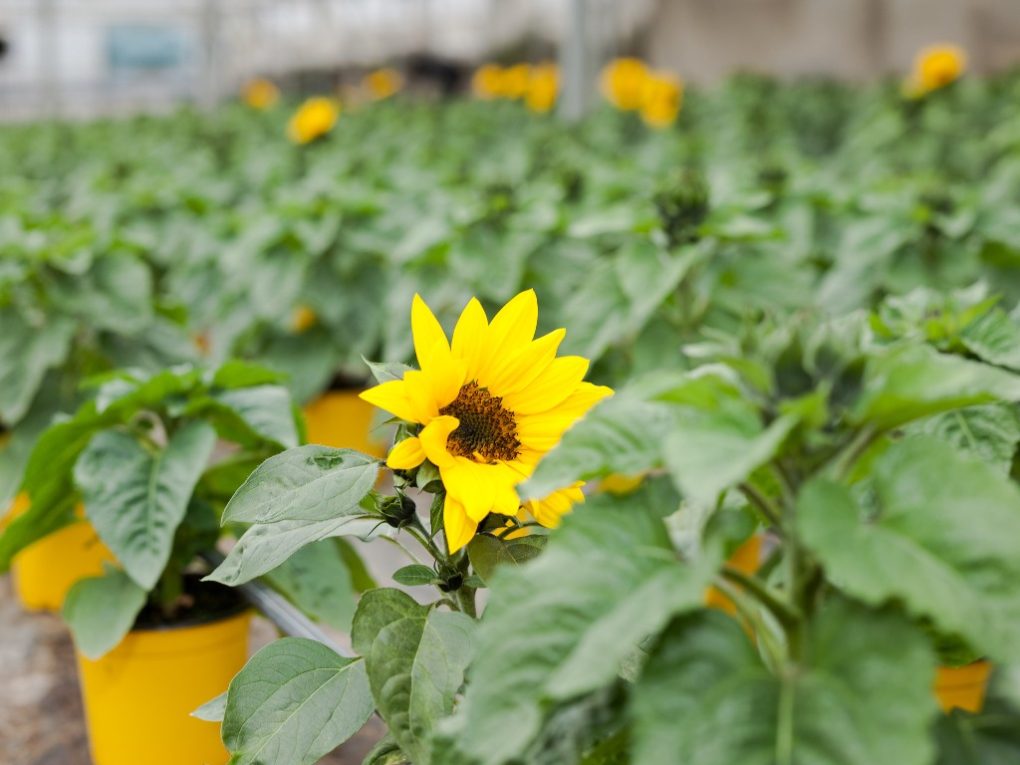Can Sunflowers Grow Inside: List of Indoor Sunflowers and Tips to Grow It Inside
Yes, sunflowers can be grown inside, but they require certain conditions to thrive. Indoor sunflowers require a lot of light, requiring full sun for at least six hours daily. They can be grown near a south-facing window or under grow lights to achieve this. Sunflowers also require well-draining soil and adequate moisture.

Table of Contents
Sunflower Varieties to Grow Indoors
Sunny Smile
Sunny Smile sunflowers are a popular dwarf sunflower variety well-suited to indoor growing. These sunflowers typically grow to 12-24 inches tall and produce bright, cheerful blooms around 2-3 inches in diameter.
Sunny Smile sunflowers require full sun or bright, direct light for at least 6 hours daily, making them a good choice for a south-facing window or under grow lights. They also require well-draining soil and regular watering to keep the soil moist but not waterlogged.
One advantage of growing Sunny Smile sunflowers indoors is that they bloom relatively quickly, usually within 60-75 days of planting. This makes them a great option for indoor gardeners who want to enjoy the beauty of sunflowers without waiting several months for the plants to mature.
Teddy Bear
Teddy Bear sunflowers are a popular variety of sunflowers that are well-suited to indoor growing. They are known for their large, fluffy blooms, reaching up to 6 inches in diameter. These sunflowers typically grow to around 2-3 feet, making them a good choice for container gardening.

Firecracker
Firecracker sunflowers are a popular variety of sunflowers that are known for their vibrant red and yellow blooms. These sunflowers typically grow to around 4-5 feet and produce multiple blooms per stem.
Sunrich Limoncello Summer
Sunrich Limoncello Summer is a dwarf sunflower variety well-suited to indoor growing. These sunflowers typically grow to 18-24 inches and produce bright, lemon-yellow blooms around 4-5 inches in diameter.
Lemon Queen Sunflower
Lemon Queen is a beautiful sunflower variety that is well-suited to indoor growing. These sunflowers typically grow to around 5-7 feet and produce large, lemon-yellow blooms around 4-6 inches in diameter.
One advantage of growing Lemon Queen sunflowers indoors is that they can bloom relatively quickly, usually within 75-90 days of planting. This makes them a great option for indoor gardeners who want to enjoy the beauty of sunflowers without waiting several months for the plants to mature.
Autumn Beauty Sunflowers
Autumn Beauty sunflowers are popular for their striking and unique coloration. These sunflowers typically grow to a height of around 5-7 feet and produce large blooms ranging from deep red to golden yellow to dark chocolate brown.
Red Sun Sunflowers
Red Sun sunflowers are an amazing variety that is well-suited to indoor growing. According to the Territorial Seed Company, these sunflowers typically grow to around 5-8 feet. They have vibrant red blooms around 4-6 inches in diameter.

One advantage of growing Red Sun sunflowers indoors is that they can bloom relatively quickly, usually within 60-75 days of planting. This makes them a great option for indoor gardeners who want to enjoy the beauty of sunflowers without waiting several months for the plants to mature.
Red Sun sunflowers are relatively compact and bushy, making them a good choice for indoor gardeners with limited space. However, they do not require staking or support and can be grown in smaller pots or containers.
Tips to Take Care of Sunflowers Indoors
Light
Light is one of the most important factors for growing healthy sunflowers indoors. Sunflowers require at least 6 hours of direct sunlight daily to grow and produce flowers. You can use grow lights to supplement or replace natural sunlight if you don’t have a sunny window or enough natural light. LED grow lights are a good option as they are energy-efficient, emit less heat, and provide sunflowers with the right light spectrum.
It’s important to keep the grow lights on for 12-16 hours a day and turn them off at night to give your sunflowers a rest period. Then, adjust the distance between the lights and the plants as they grow to prevent burning or stretching.
Watering
Watering is an essential aspect of growing sunflowers indoors. Sunflowers require regular watering to keep the soil moist but not waterlogged. Overwatering can lead to root rot, while underwatering can cause the plants to wilt and eventually die.
To water your indoor sunflowers, check the soil moisture level first. Then, insert your finger into the soil up to the first knuckle. If the soil feels dry at this depth, it’s time to water.
Water the soil directly, not the foliage, to avoid fungal diseases. Slowly pour water around the base of the plant until the soil is evenly moist. Allow excess water to drain from the pot and discard the drainage water to prevent waterlogging.
Soil
Choosing the right soil is crucial for growing healthy sunflowers indoors. Sunflowers require well-draining soil rich in nutrients to support their growth and development.
When selecting soil for indoor sunflowers, look for a high-quality potting mix formulated for flowering plants. A good potting mix should contain a blend of organic matter, such as peat moss, vermiculite or perlite, and compost. These ingredients provide good drainage and aeration and retain moisture, which can help prevent overwatering.
Adding some slow-release fertilizer to the soil mix is also recommended to give your sunflowers essential nutrients as they grow. You can also supplement with a liquid fertilizer every few weeks to promote healthy growth.

Avoid using soil from your garden or reusing old potting soil, as it may contain pests, diseases, or nutrient deficiencies that can harm your sunflowers.
Temperature
Sunflowers prefer warm temperatures and can tolerate a wide range of temperatures, but they thrive in temperatures between 65-75°F (18-24°C) during the day and 55-65°F (12-18°C) at night.
Keeping your indoor sunflowers away from drafts or extreme temperature changes is important, as they can stress the plants and affect their growth. Avoid placing sunflowers near windows, doors, or air conditioning vents, where the temperature fluctuates rapidly.
During winter or in areas with cold temperatures, you may need to use a heating mat to keep the soil warm or provide additional heat through grow lights or space heaters.
Fertilizer
Fertilizing indoor sunflowers is important to promote healthy growth and vibrant blooms. Sunflowers require many nutrients, including nitrogen, phosphorus, and potassium, to grow strong and healthy.
When choosing a fertilizer for your indoor sunflowers, look for one formulated for flowering plants and containing a balanced blend of nutrients. For example, a fertilizer with a higher nitrogen content can promote vegetative growth, while a higher phosphorus and potassium content can encourage flower development.
It’s best to fertilize your sunflowers every two to four weeks during their growing season, typically in the spring and summer. Follow the manufacturer’s instructions for application rates, and avoid over-fertilizing, as it can lead to fertilizer burn or nutrient imbalances.
Pruning
Pruning indoor sunflowers is only typically necessary if you want to shape or control the size of the plant. However, if your sunflowers become too tall or leggy, you can trim them back by removing the top portion of the stem or pinching off the top growth.
Additionally, you can remove any dead or yellowing leaves from your sunflowers to improve their appearance and prevent disease.
It’s important to be careful when pruning indoor sunflowers, as they can be delicate and prone to damage. Use sharp, clean pruning shears to make clean cuts, and avoid removing more than one-third of the plant’s foliage or stem at once.
Support
Indoor sunflowers generally only require support if they become too tall and start to lean or flop over. In this case, you can use a stake or a bamboo pole to prop up the stem and keep the plant upright.
To support your indoor sunflowers, gently tie the stem to the stake using a soft string or plant tie. Be careful not to tie it too tightly, as this can damage the stem or restrict its growth.
Another way to support indoor sunflowers is using a plant cage or trellis. These structures can help keep the plant upright and provide additional support as it grows.
Pest Control
Indoor sunflowers are generally less susceptible to pests than outdoor sunflowers, but they can still attract insects like spider mites, aphids, and whiteflies. Here are some tips for pest control for indoor sunflowers:
- Regularly inspect your sunflowers for signs of pests, such as small insects, webbing, or distorted leaves.
- Isolate any infested plants to prevent the pests from spreading to other plants.
- Use a gentle spray of water to wash away any pests on the leaves and stems.
- For more severe infestations, use an insecticidal soap or neem oil spray to control the pests. Follow the instructions carefully and avoid overuse, as these products can harm beneficial insects.
- Prevent future infestations by keeping your indoor sunflowers clean and healthy. Remove dead leaves and debris, and avoid overwatering, creating a damp environment that attracts pests.
- Introduce beneficial insects like ladybugs or lacewings to your indoor garden. These insects can help control pest populations naturally.
